The Major Ocean Currents of the World

“In 1992, a cargo ship carrying rubber ducks got caught in a storm. The ocean currents swept away 28,000 of them.”
Rubber ducks caught up in a storm
Where did the rubber ducks go? They didn’t stick together. Instead, they dispersed all over the world.
This story tells us that ocean currents aren’t easy to follow. Their paths are dynamic. And it’s even unpredictable.
Just take a look at NASA’s ocean currents maps. They show the beauty and complex nature of this phenomenon.
Ahoy, matey! Let’s set sail on a journey to Earth’s major ocean currents
If you look at a world map, you can see that Earth’s 5 oceans are vast. In fact, oceans cover more than 70% of Earth.
Water is always on the move. Ocean currents are like giant conveyor belts flowing through the oceans moving huge amounts of water all the time.
From cold to hot (and vice versa), oceans transport water. The major ocean currents roughly follow a common set of circular paths.
While wind drives surface ocean currents from the Coriolis effect, temperature and salt gradients mostly influence deep ocean currents.
Why water moves in a circular pattern
- The sun heats water at the equator. The wind and sun make ocean currents move. At the equator, the sun heats water the strongest. When water heats, water molecules vibrate faster and eventually move farther apart.
- Hot water moves to the poles. From the equator, hot water pushes outward to the north and south pole. At the same time, cold water from the north and south poles collide with this warm water.
- Water spins in a circular pattern because of Earth’s rotation. Because Earth spins on its axis, water flows in a circular pattern. Oceans in the northern hemisphere move mostly clockwise. But in the southern hemisphere, ocean currents move mostly counter-clockwise.
Think about how the Gulf Stream current pushes warm air to Europe. It flows around the Atlantic Ocean like a clock. Because of the Gulf Stream, this is why parts of Europe have such a temperate climate.
Ocean water holds more heat than air. For example, thermohaline currents (Thermo = temperature, haline = salt) with warm, saltwater sinking, and rising. Salty water pushes not-so-salty water away. We get a current. Winds can also make ocean currents.
Which satellites track ocean movement and currents?
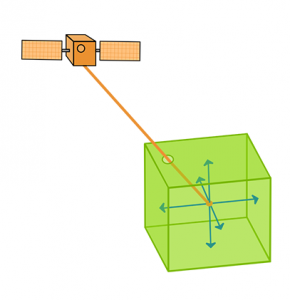
We don’t know much about what’s under our oceans. In fact, 80% of oceans are unexplored. Satellites can’t see inside the oceans. Instead, satellites like GRACE and GOCE measure gravity to map out oceanic topography.
Satellites also track ocean movement and currents. For example, NASA satellites like Poseidon and Jason have been observing ocean currents from space. These satellites monitor ocean motion by measuring sea surface height.
Overall, satellites cover more ground for tracking ocean currents. NASA/JPL’s perpetual ocean visualizes the slow-moving, swirling pools called ocean eddies.
What technology measures deep ocean currents?
There are other types of technology that map out our oceans. For example, here are some examples of technology used for ocean exploration:
Self-locating datum marker buoys monitor currents by sending out a radio signal. By monitoring these signals, we can follow and see where ocean currents are flowing. But we need a lot of them to get the whole picture.
Alternatively, a fleet of underwater robots or “Argo” research deep ocean currents. For example, Argo research vessels conduct research on ocean heat and our changing oceans.
Why do oceans have salt?
What makes oceans different from freshwater is that they contain salt and minerals. This is because heat from the sun evaporates water. When water evaporates, salt remains in the ocean.
The water vapor rises into the sky, cools, and forms clouds. Then, it falls down as rain again. When rainwater drops on the land, it washes minerals and salt from the soil into lakes and rivers. But they don’t stay there.
“When the ocean evaporates from heat, salt remains in the ocean, and water rises. So, unlike salty oceans, lakes, and rivers constantly have the minerals washed away.”
They float downhill to an outlet at the nearest ocean. So, lakes and rivers constantly have minerals washed away. Oceans are salty because runoff transports minerals and salts from the surface.
With the exception of the Great Salt Lake which doesn’t have an outlet. Salt built up in the Great Salt Lake until it was four times greater than oceans.
What living things rely on ocean currents?
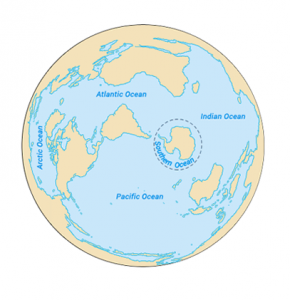
Fish rely on moving water for food and oxygen. That’s why aquariums have artificial currents moving water.
And living things need ocean currents for food, climate, and transportation
Wind and salt keep ocean water moving.
For example, our ocean’s motion significantly affects Earth’s weather and climate.
READ MORE: 10 Unbelievable Weather and Climate Facts
What are the names of the major ocean currents in the world?
But we can still divide them into major ocean currents that circulate water in our 5 oceans:
| Ocean Current | Description |
|---|---|
| Gulf Stream | Warm ocean current originating in the southeast coast of the United States |
| Labrador Current | Cold ocean current flowing from the Arctic Ocean south along the east coast of Canada |
| North Equatorial Current | East-to-west flowing current from 10°-20°N in the Pacific and the Atlantic Ocean |
| North Equatorial Counter Current (NECC) | West-to-east flowing current from 3°-10°N in the Atlantic, Indian Ocean, and the Pacific Ocean |
| South Equatorial Current | East-to-west current flowing between the equator and about 20°S in the Pacific, Atlantic, and Indian Ocean |
| South Equatorial Counter Current (SECC) | Weak east-flowing current near 8°S in the Atlantic and Pacific Ocean |
| Kuroshio Current | North-flowing warm current off the coast of Japan in the Pacific Ocean |
| Alaska Current | Southwestern warm water current off the coast of Alaska and west coast of Canada. |
| California Current | Southward flowing current off the west coast of the United States in the Pacific Ocean |
Additional Resources
1. TED-Ed Lesson – How Ocean Currents Work
This TED-Ed lesson features how ocean currents work. It starts with a story of how rubber ducks got swept away by ocean currents.
Then, it gets into what influences ocean currents. For example, the wind, tides, water density, rotation, and even ocean floor topography influence currents in the oceans.
Finally, the lesson contrasts the differences between surface and deep ocean currents. For example, surface currents control the motion of about 10% of the upper ocean space. Then, deep ocean currents occupy the other 90%.
2. NASA’s Scientific Visual Studio: Perceptual Ocean
As you’ve learned, wind, density, and a variety of forces drive ocean currents. But how does this all look in the big picture?
NASA’s Scientific Visual Studio uses ocean flow data from satellites (Topex/Poseidon, Jason-1/2, QuikScat, and GRACE) and in-situ data. The result?
A visceral experience is known as the perceptual ocean map spanning hundreds of thousands of kilometers of our ocean surface.
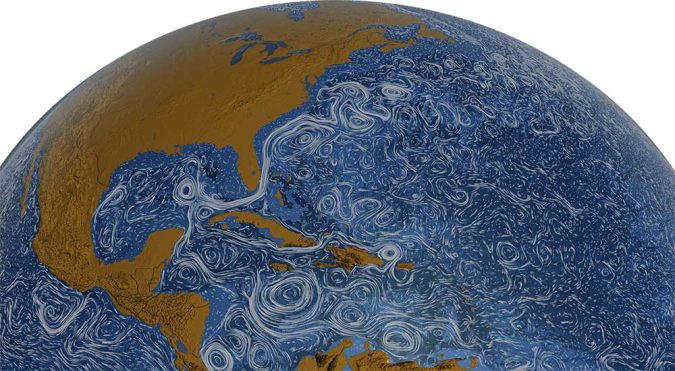

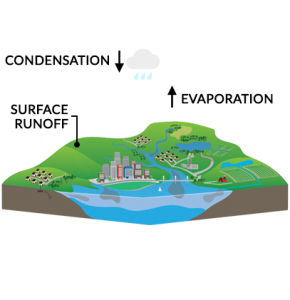
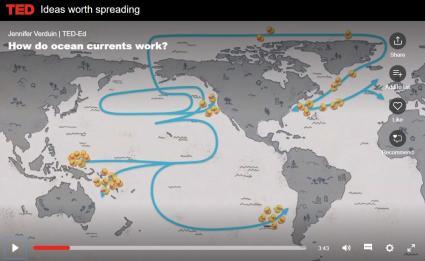
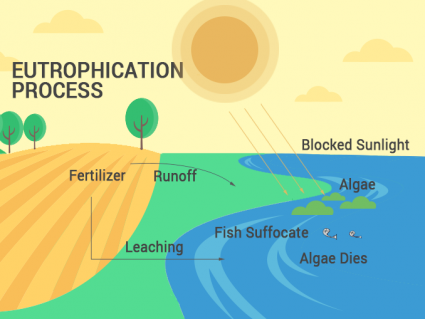

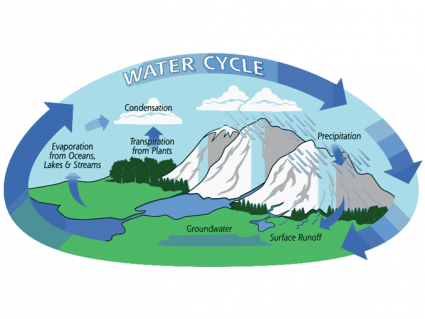

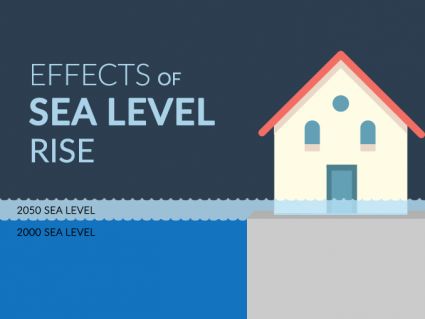

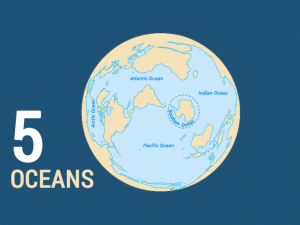
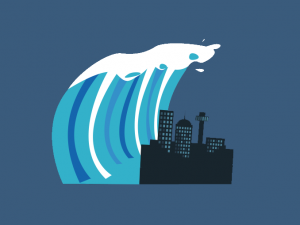

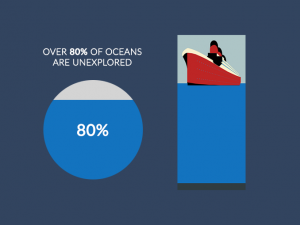


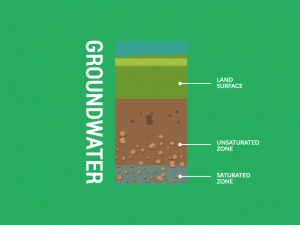

Thank you, super healpful
🙂
I want to find a duck now..
Helpful for what I’m trying to do, thanks! it is kinda confusing but its really helpful! thankssssssss!!!!
very very good
So sigma
It’s great. But kinda confuses me.
It helps a lot! Keep up the good work
What does that mean by our ocean being ever-changing? Does this mean anything or have anything to do with the nuclear reactor in Japan? What effects have this taken on the coral reef as well as all the Marine biology
It helped a little bit
What a wonderful article and compilation of materials! That Ted Talk is one of the best videos I have seen explaining ocean currents.
I don’t agree with the explanation of “why” oceans are salty. How and why are not the same, and it only answers how and not why. How explains the mechanism not the purpose.
Here’s the why: Oceans are salty for the very same reason that salt is used in a swimming pool – to maintain a clean healthy environment and keep diseases at bay.
Thanks For informing me!
Very useful
Excellent, answers alot of info I learnt in geography at 2ndry school 45yrs ago. Wish they taught this in school now instead of other rubbish
When I look at the rotations of ocean disturbances, they are flowing in the opposite directions stated in the article. Northern hemisphere systems are moving in a counterclockwise direction, & southern hemisphere systems are moving in a clockwise direction. Something is very wrong here….
Danke shan!
Thank you for informing me about this stuff